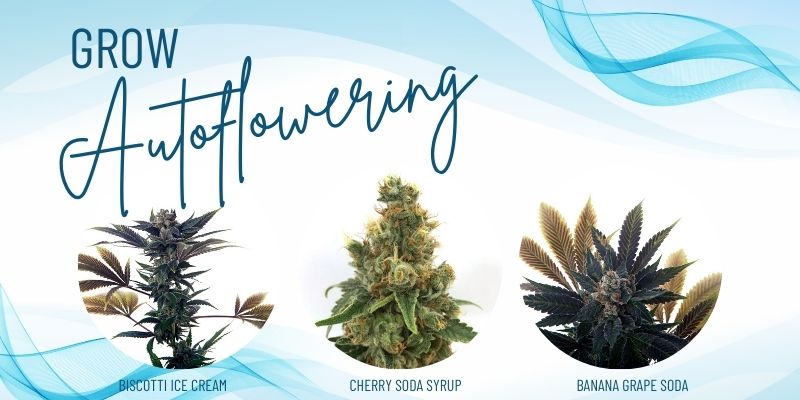Autoflowers have earned their place in the grower’s toolkit for good reasons: they’re compact, quick, and low maintenance. But here’s what a lot of growers overlook: autos aren’t just for rookies anymore. With the right techniques and a sharp eye on timing, these fast-track plants can crank out dense, top-shelf harvests that rival photoperiod strains.
If you’re still thinking of autoflowers as “set it and forget it,” you’re leaving serious yield on the table. Advanced training methods, such as low-stress training (LST), selective defoliation, and carefully timed topping, can help you unlock their full potential. But with autos, it’s a different ball game. Every move must be intentional, and every day counts.
And let’s be real, none of these techniques matter if you’re not starting with stable, vigorous genetics. Mosca Seeds offers a wide selection of top-shelf cannabis seeds, including autoflowers that respond well to training and grow with uniformity, resilience, and strength. That’s the foundation for any high-yielding auto grow.
What Makes Autoflowers Different (and Trickier to Train)

Autoflowers aren’t like your typical photoperiod plants. They don’t wait around for the right light cycle to start flowering; instead, they flip to flowering on their own, based on age, not hours of darkness. That means you don’t get the luxury of a long veg phase where you can train, recover, and sculpt your canopy over time.
The Short Vegetation Window
Most autoflowers kick into the flowering stage around week 3 or 4, depending on the strain. That leaves a narrow window, just 10 to 20 days, for any high-impact plant training. Miss it, and your plant will be flowering before you’ve had a chance to shape its structure. At that point, any serious stress (like topping or heavy defoliation) is a gamble, and it could stall bud development or shrink yields.
No Photoperiod Recovery Time
Photoperiods give you room to experiment. You can top them, stress them, let them bounce back, and still have weeks to go before flowering starts. Autos don’t offer that kind of flexibility. Once they flip, the clock is ticking. Any misstep becomes permanent.
The good news? Autoflowers absolutely can be trained, and they respond well when the training is done correctly. The key is understanding the rhythm of your plant, acting early, and choosing techniques that match your strain’s growth pattern.
Some growers stick with gentle LST and side-branch encouragement. Others get bold with topping and defoliation, but only when they’ve dialed in their timing and environment. The difference between stunting a plant and unleashing its full yield comes down to experience, technique, and genetics.
Low-Stress Training (LST): The Safest Bet
If you want to boost your autoflower yields without risking the health of your plant, low-stress training (LST) is your go-to technique. It’s gentle, reliable, and highly effective when timed correctly. Unlike topping, LST doesn’t involve cutting or damaging the plant; it simply involves bending and securing branches to shape how the plant grows.
Why LST Works for Autos
Autoflowers naturally focus their energy on producing a single dominant cola unless guided otherwise. By bending the main stem horizontally and tying it down, you redirect that growth energy to the side branches. This helps develop a flatter, more even canopy, allowing more light to hit more bud sites. The result? Bigger buds, less popcorn.
LST also improves airflow through the canopy, reducing the risk of mold in dense foliage and maintaining control over microclimates, especially in humid environments or crowded indoor tents.
Timing is everything; you want to begin LST early, around week 2 or when the plant has 4 to 5 nodes. At this point, stems are still flexible and can be gently bent without snapping. Miss this window, and the stems will stiffen as the plant begins flowering, making the process riskier and less effective.
Once you’ve bent the main stem down, secure it with soft plant ties, garden wire, or even coated paper clips attached to the rim of your container. As the plant grows, continue to guide new branches outward to maintain a wide, open structure.
How LST Training Improves Autoflower Yield
Performed correctly, LST can increase yields by 20–100%, depending on your environment and genetics. You’re not creating new bud sites; you’re unlocking the potential of existing ones by giving them equal access to light. It’s a simple tactic with tremendous upside and minimal downside, especially when working with autoflowers that are known for rapid growth and short lifespans.
Some growers report achieving yields of 3–4 ounces per autoflower with aggressive LST under high-quality LEDs, good airflow, and proper nutrition. Keep in mind that strain structure matters. A plant with good lateral growth responds much better to LST than a tall, lanky phenotype.
Pro Training Tips:
- Start small: Don’t bend too far on day one. Gradually train over a few days.
- Be consistent: Check your plants daily to reposition branches as they grow.
- Avoid breaking: If a stem snaps, tape it gently and leave it—it may recover.
- Don’t combine LST with topping unless you’re highly experienced: The combo can work, but it’s risky on autos due to the short veg time.
LST is the best of both worlds: low risk and high reward. And when paired with Mosca’s genetically vigorous autoflowers, you’ll see just how far this technique can take your harvest.
Topping Autoflowers: High Risk, High Reward
If low-stress training is the safe lane, topping is the express lane, with speed bumps. Done right, topping an autoflower can completely change the plant’s structure and yield potential. Done wrong, it can stunt your plant and slash your harvest. Knowing when and how to do it makes all the difference.
Why Top an Autoflower?
Autoflowers naturally grow with a single, dominant cola. Topping involves cutting off the main growth tip to break apical dominance and encourage the plant to develop multiple main colas instead. The goal? A more even canopy and better light distribution across all bud sites. This can result in larger, denser buds overall, rather than just one giant top.
Many experienced growers use topping to double or even triple their main colas on autos, but it’s not something to rush into blindly. Timing is everything (again): with autos, the window for topping is narrow. You need to top early, usually around the 4th or 5th node, while the plant is still in its vegetative stage. Waiting even a week too long can mean your plant is already shifting energy into flowering, leaving no time to recover.
If you’re unsure about timing, it’s usually better to skip topping or stick with LST. A delayed or stressed auto in flower will almost always yield less. Here’s more info about topping autoflowers.
The Risks of High-Stress Training on Autos
Unlike photoperiods, autos don’t give you the cushion of time to bounce back from mistakes. Every hour your plant spends healing from a topping cut is an hour it’s not growing buds. The risks include:
- Stunted growth (fewer bud sites overall)
- Reduced yield if done late or on a weak plant
- Stress hermies (rare but possible with unstable genetics)
That’s why many veteran growers will test topping on one plant from a batch rather than all at once, to see how that strain responds.
Strain and Genetics Matter
Some autoflower strains can handle topping like a champ, while others can sulk or stall out. Indica-leaning autos tend to be more compact and often respond better to topping. Tall, sativa-dominant autos can be trickier due to their structure and shorter veg times.
This is where genetics comes into play. Stable, vigorous autoflower genetics provide a larger margin for error. A healthy, fast-growing plant with strong lateral branching will always respond better to topping than a weak or runty one.
Pro Grower Tip:
If you’re new to topping autos, try this strategy:
- Top just once, early, above the 4th node.
- Combine it with gentle LST after topping to spread out the new colas.
- Give the plant a day or two of ideal conditions to recover (good light, mild feed, stable temps).
This “one cut, one shape” approach minimizes stress while still creating a more productive canopy.
Boosting Autoflower Yields with Defoliation, Support, and Smart Lighting
Once your autoflowers are topped and trained, a few smart finishing moves can help you maximize yield without stressing the plant.
Light Defoliation (Done Correctly)
Selective defoliation, removing a few fan leaves, can help:
- Improve airflow to prevent mold
- Let light hit the lower bud sites
- Focus energy on the top colas
Keep it light: only remove a few leaves at a time during the early flowering stage. Avoid aggressive stripping, which can stress your vehicle.
Support Heavy Buds
If your autoflower has a wide canopy or big colas, add support before they flop over. Use bamboo stakes, soft ties, or yo-yos to hold up side branches. Some autos like can surprise you with weight.
Optimize Light Schedule
Autoflowers thrive under consistent light. For indoor growers:
- 18/6 (on/off) is most common
- 20/4 can boost yield, but uses more power
- Stick to one schedule—autos dislike changes mid-cycle
Feed Smart and Finish Strong
Feed early but gently. Most autos like:
- Early nutrient start (week 2–3)
- Bloom nutes by day 25–30
- Moderate EC levels (don’t overfeed)
Dial in your environment and let the genetics do their thing.
Real Grower Tips and Common Autoflower Mistakes
Even seasoned growers can lose yield from a single misstep with autoflowers. These plants reward early, calculated moves, but punish overhandling or poor timing.
Pro Autoflower Tips:
- Start strong: Use the final container or transplant by day 10 to avoid stunting.
- Train early, not often: LST and topping must happen before day 21–24 at the latest.
- Stay even: A level canopy ensures all bud sites get equal light exposure.
Mistakes to Avoid:
- Delayed topping or high-stress training: Autoflowers don’t have the time to recover.
- Too much nitrogen: It leads to leafy, underdeveloped buds.
- Overcrowding: Packed grow spaces limit airflow and reduce light penetration, especially when plants are trained.
Autoflowering strains can outperform expectations with the proper training techniques and timing. Light stress, good light exposure, and early shaping make all the difference in final yield. Check out our Seed Menu, which includes top-quality autoflowers, and start growing high-performing plants from premium autoflower seeds.
